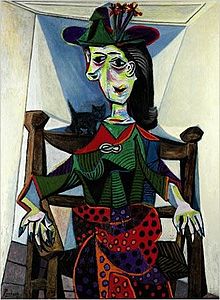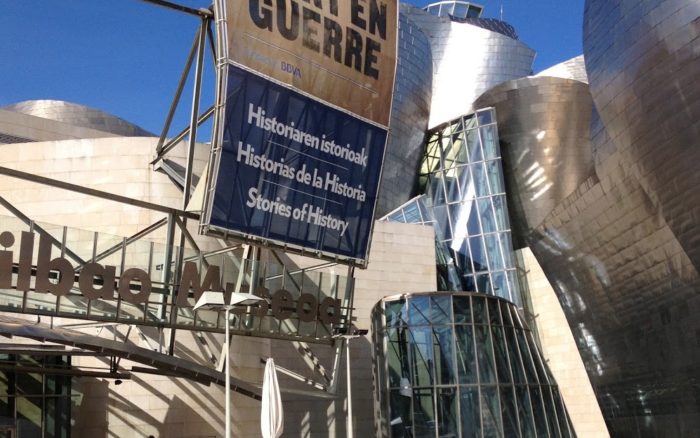Art and the Dark Sun of Consciousness: Bilbao’s L’Art En Guerre
Perhaps there could not be a more appropriate venue for the French art show L’Art En Guerre France, 1938-1947, than the Bilbao Guggenheim Museum.
The show features artists, both famous and unknown, who painted throughout the occupation of France by Germany during the Second World War. These individuals suffered censor and/or detention and include Salvador Dalí, Jean Dubuffet, Marcel Duchamp, Max Ernst, Jean Fautrier, Alberto Giacometti, Wassily Kandinsky, Paul Klee, René Magritte, Henri Matisse, Joan Miró, and Pablo Picasso. In the case of a few, including Felix Nussbaum, Horst Rosenthal, and Charlotte Salomon, the art in the exhibit is all that remains of them as they were shipped to the death camps.
 |
| Dora Maar au Chat, 1941, Pablo Picasso Wikipedia.org |
Of course, many of the detainees were of the French Resistance, a significant force in helping the Allies gain ground in France and eventually liberate them. This exhibit is a testament to the importance of expression. Through creative effort, not only was the spirit was kept alive in the face of such atrocities and hardships, but newly evolving art forms emerged. Never before released film clips of the of detainees returning to their communities after the occupation showed eyes stunned with the knowledge of what they had suffered. This footage of the rawness of the human spirit was that which also enlivened those now familiar works of Picasso and Matisse, Miro and Dali.
| Interior, Bilbao Guggenheim. Photo by Donald Harms. |
This exhibit is housed in Frank Gehry’s Guggenheim in Bilbao. Gehry’s architecture stretches the psyche, transforming the unconscious acceptance of status quo into wonder. Upon first sight of the building, one can no longer assume anything about what will be experienced next. The soberly poetic and yet playful structure experiments with light, water, stone, and metal in surprising ways. The large reflecting pool surrounding the north side of the building visually melds the building with the river Nervión. The bridge arching over the river becomes an extension of the building, the transformation a seamless extension with what was and with what will be.

